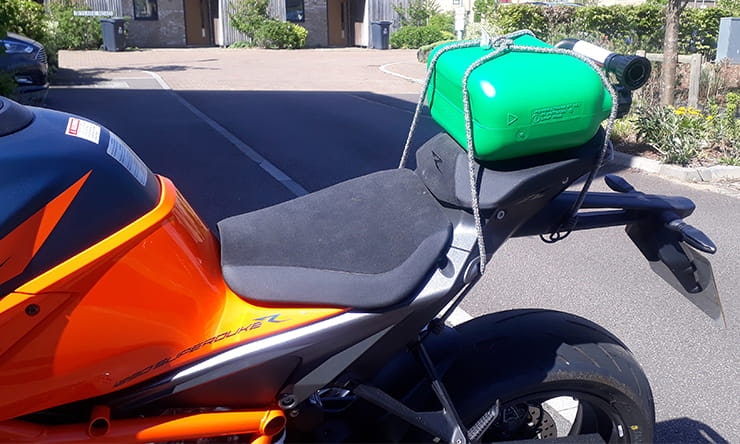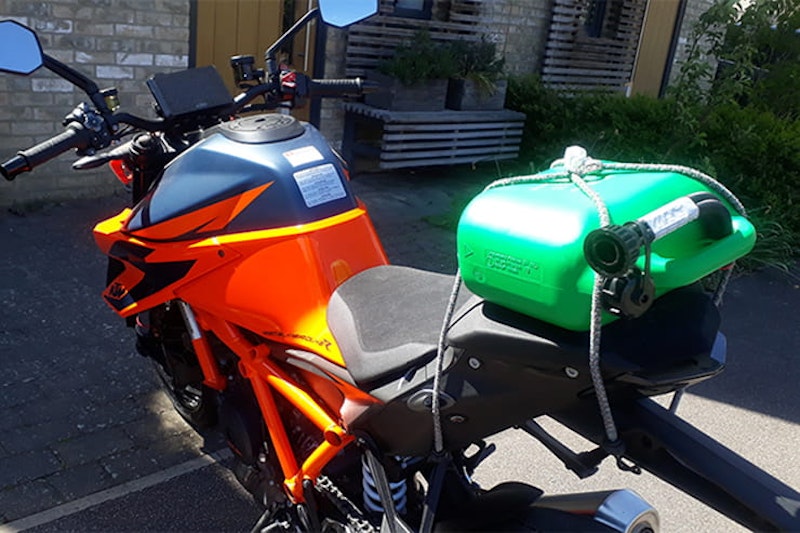Is it legal to carry extra fuel?
Yes, if you do it sensibly. European countries follow rules set down in an Agreement of Dangerous goods by Road (ADR) which says that its zillions of pages of regulations don’t apply to private individuals provided that “measures have been taken to prevent any leakage of contents in normal conditions of carriage.” Then you just have to comply with Road Vehicles (Construction and Use) Regulations, which say, basically, that a load has to be secured so it won’t fall off. So if you’ve got a proper container, and strapped it on properly, you’re golden.
What are the risks of carrying extra fuel?
Predictably enough, most risks involve petrol leaking out and turning you into a fireball:
The seal of your container leaks. This can happen through user error, but often is a result of the fuel dissolving the lid seal because the container is not designed to carry fuel.
The container splits during a crash. Again, this is far more likely if you’re using a Lucozade bottle rather than a petrol can. Things can get even more dramatic if you’ve put the container in your rucksack.
The container leaks because the fuel has dissolved it. You guessed it, this is because it’s not a proper fuel container.
The container isn’t secured properly and causes you to lose control of the bike or bounces down the road and causes problems for someone else.
How to carry extra fuel on a motorcycle
There are four options.
1) Strap a five litre petrol can to the back. The most basic option, and ok for emergencies, but the problem is they’re difficult to strap down safely. The shape is awkward, tie downs slip off, and they’re tricky to keep vertical (if you’re paranoid about the seal). If you can fit one in your tailpack, it’s a viable long term option.
2) Camping fuel bottles. These come in various small sizes (eg 0.5 or 1 litre) which makes them practical to shove down the side of your panniers. If you ride gently you’ll get at least 10-15 miles from one litre, which should get you off a motorway, though perhaps not to a fuel station. One in each pannier is a better bet. If you don’t fancy storing petrol next to your clothes, you can zip tie or clamp them to a frame spar.
3) Stackable storage cans. Starting to get serious here – these badboys are more of a world tour option rather than a Scottish tour essential. They can bolt on to pannier frames, rear racks, or engine bars and will give you anywhere between 4 to 20 litres of extra fuel per can – and you can double them up for the full apocalypse spec.
4) Auxiliary tanks and larger main tanks. Again, a serious solution. Auxiliary tanks usually sit on the pillion seat and are plumbed into the main fuel line – you turn a tap to switch them on. Larger main tanks are popular among the overlanders using small trail bikes, though some GS owners fit the bigger tank from the appropriate Adventure model.

